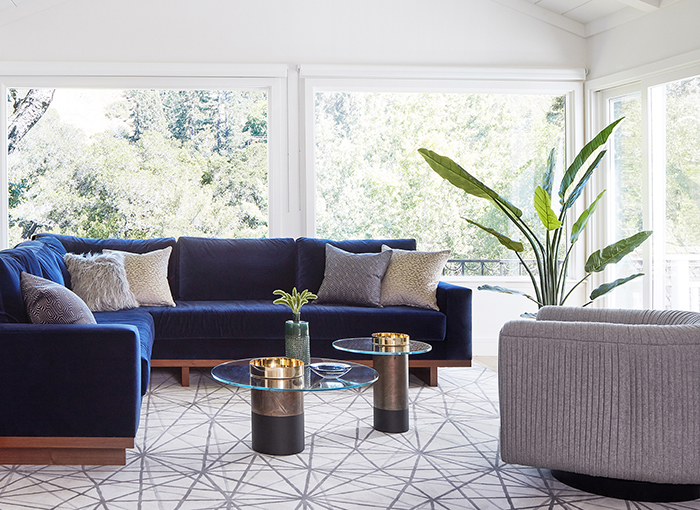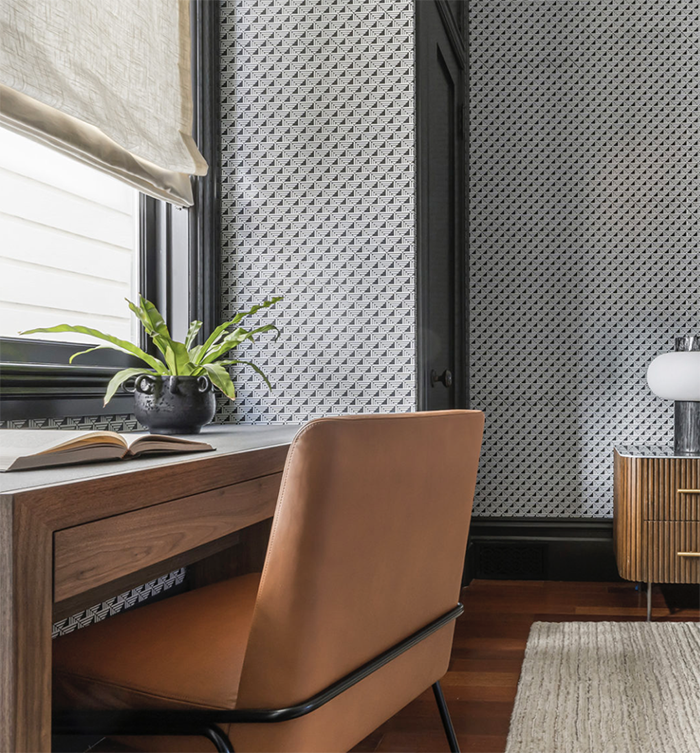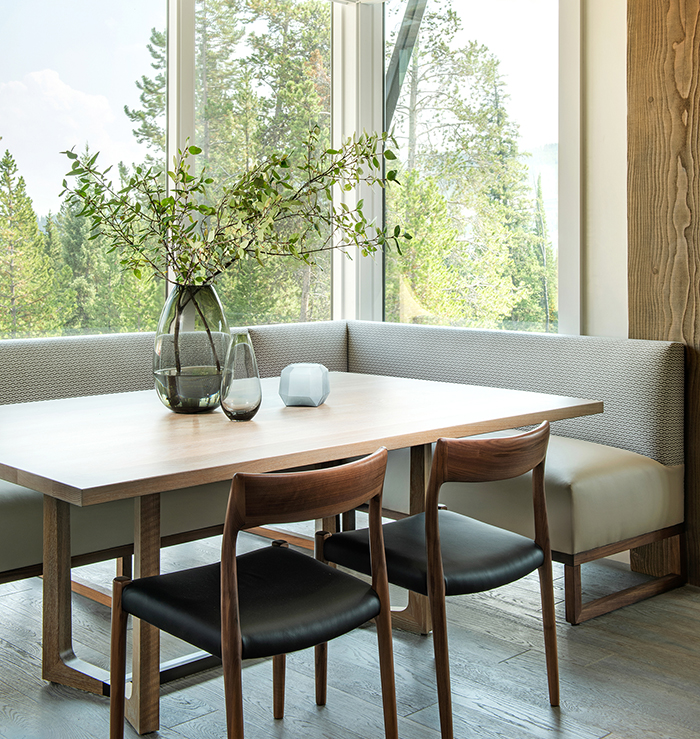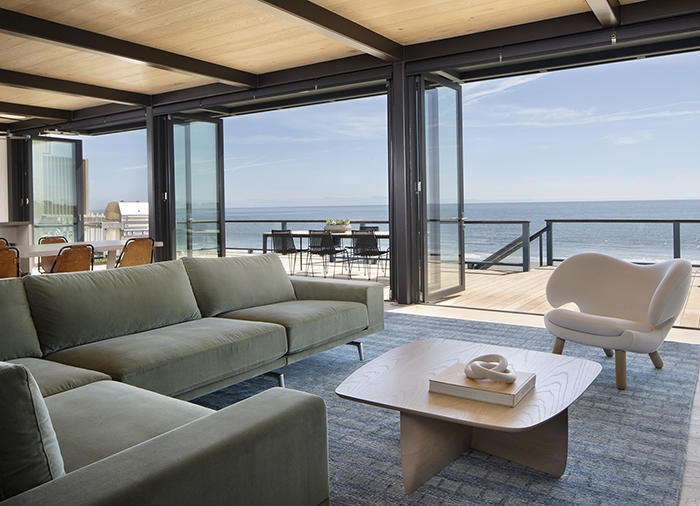Biophilic Design Tips for a Healthier Home
In the hustle and bustle of modern life, we often find ourselves disconnected from nature, spending the majority of our time indoors. Humans have an innate need to connect with the natural world, and this disconnect can have negative effects on our well-being. Biophilic design is another way of integrating sustainability into your home, seeking to bring nature into our built environments, promoting harmony, health, and vitality. Biophilic design has been linked to improved mental well-being and mood and studies have shown that environments with natural elements promote feelings of happiness, relaxation, and overall satisfaction with one’s living space. Simply being surrounded by greenery or natural light can uplift the spirits and create a sense of tranquility at home. In this post, our sustainable Bay Area interior designers will explore the principles of biophilic design and offer practical tips on how you can incorporate it into your eco-friendly home.

Biophilic design is rooted in the idea that humans have an inherent affinity for nature, stemming from our evolutionary history. It seeks to satisfy this need by integrating natural elements, patterns, and processes into the built environment. By doing so, biophilic design aims to enhance our connection to nature, reduce stress, boost productivity, and improve overall well-being. Scientific studies have consistently shown the positive impact of biophilic design on quality of life across various settings, from homes to workplaces and healthcare facilities. For instance, a study published in the Journal of Environmental Psychology found that office workers in environments with biophilic elements reported higher levels of well-being, creativity, and overall satisfaction compared to those in traditional office settings. The presence of natural elements such as plants, daylight, and views of nature was associated with lower stress levels, increased productivity, and improved cognitive function.
Key Principles of Biophilic Design
- Connection to Nature: This principle emphasizes the importance of fostering a strong connection with the natural world. Whether through direct views of greenery, indoor plants, or natural materials, creating a sense of immersion in nature is paramount.
- Natural Light and Air: Maximizing access to natural light and fresh air is crucial for promoting health and well-being. Large windows, skylights, and operable windows can help flood interiors with daylight and facilitate natural ventilation.
- Natural Shapes and Forms: Integrating organic shapes and forms reminiscent of nature can evoke feelings of tranquility and relaxation. Curved lines, biomorphic patterns, and flowing contours can soften harsh architectural lines and create a more harmonious environment.
- Biomorphic Patterns and Textures: Incorporating patterns and textures inspired by nature, such as wood grain, stone textures, or leaf motifs, can evoke a sense of comfort and familiarity.
- Greenery and Living Systems: Introducing plants and living elements into interior spaces not only enhances aesthetics but also improves air quality, reduces stress, and promotes a sense of well-being.

Introduce Indoor Plants
There are many practical ways to bring the outdoors into your home design, the easiest and most obvious being indoor plants! Choose low-maintenance species that thrive in indoor environments, such as pothos, snake plants, or peace lilies. (Read more about the top plant varieties for improving indoor air quality here.) Place them strategically throughout your home, including living areas, foyers, bedrooms, and even bathrooms, to reap the benefits of improved air quality and mood enhancement. Consider scale when shopping for house plants and avoid the common pitfall of selecting a plant that is too small for a room. Bird of Paradise, Ficus Audrey and Majesty Palms are all great species that come in larger sizes; our interior designers use these to fill corners of large living rooms or primary bedrooms in our residential Bay Area projects.
Maximize Natural Light
Make the most of natural light by strategically positioning furniture to allow sunlight to penetrate deep into your living spaces. Avoid blocking windows with heavy curtains or furniture, and consider using sheer or translucent window treatments to diffuse harsh sunlight while maintaining privacy.

Use Natural Materials
Embrace the beauty of natural materials such as wood, stone, and cork in your home decor and furnishings. Opt for hardwood flooring, marble countertops, and solid wood furniture to add warmth, texture, and visual interest to your interiors while connecting with the natural world. Our sustainable Bay Area interior designers mix natural fabrics with various textures to create layered and tactile rooms that feel good to spend time in. Organic cotton and linen, wool, jute and sisal are all good contenders.

Embrace Biophilic Patterns
Infuse your home with patterns and textures inspired by nature, such as organic patterns and natural textures. Incorporate these elements into your decor through area rugs, throw pillows, artwork, and textiles to create a sense of connection with the natural world. At Niche Interiors, we opt for rugs with softer, curved patterns rather than harsh angles for rooms that feel too boxy or modern. Our San Francisco interior designers also consider the shape of furniture pieces and try to balance clean lines with more organic shapes to give spaces a more harmonious feel. Introducing colors found in the surrounding landscapes is another way to strengthen the visual connection from exterior to interior spaces, a shown in the living room of this modern California beach house design.
Create Green Views
If you’re fortunate enough to have access to outdoor space, capitalize on it by framing views of nature from within your home. Arrange furniture to take advantage of scenic views, and consider installing large windows or sliding glass doors to blur the boundary between indoors and outdoors. Whether it’s a lush garden, sprawling landscape, or views of the Pacific Ocean, incorporating views nature into your living space can evoke a sense of calm and relaxation.
